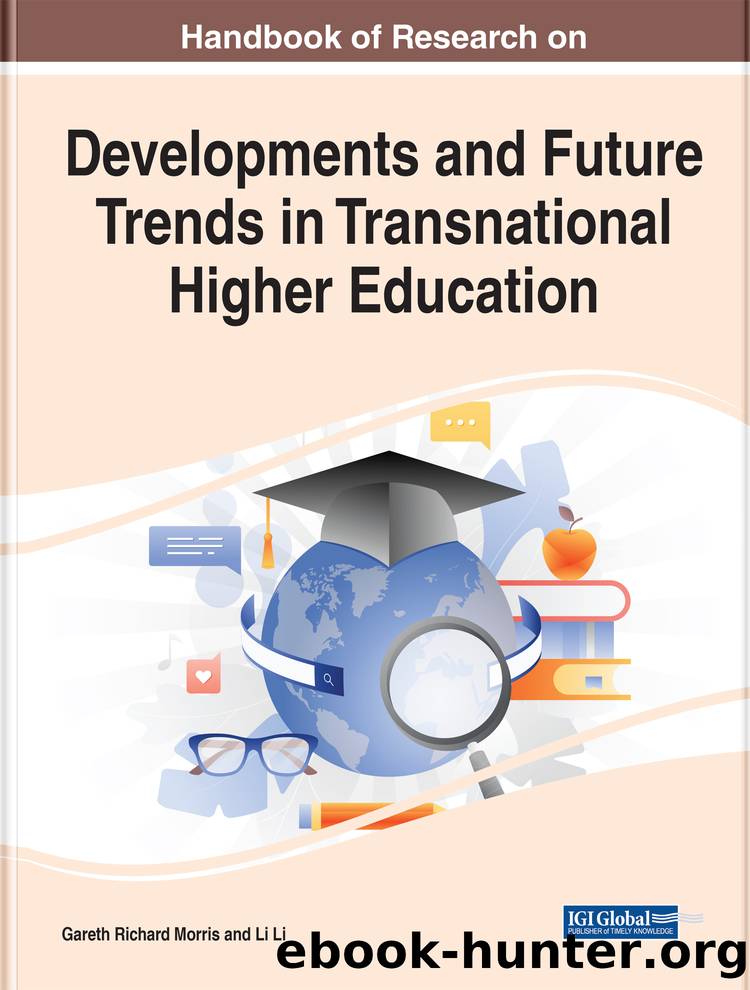Handbook of Research on Developments and Future Trends in Transnational Higher Education by Morris Gareth

Author:Morris Gareth
Language: eng
Format: epub
Publisher: Information Science Reference
It may be the case that a reading of the above examples leads to the conclusion that goodwill was being sought from local staff, and that a renumeration in kind was then accepted. If that is so, the author would like to make two points. First, a concept of favours given and returned operates across many cultures. In the UK, for example, this would be the time-honoured practice of âyou scratch my back and Iâll scratch yours.â In some eastern cultures, a similar concept is often more deeply-embedded culturally as well as practiced more openly. In China, this is known as guanxi, a practice which, when conducting business, is not to be taken lightly or dismissed as a kind of low-level corruption. On the contrary, learning to navigate guanxi successfully, understanding, for example, that a favour will always be returned and that a refusal is likely to cause offence, is, arguably, a lesson in cross-cultural communication. This being so, would this not then be an instance of bridging, too: that of an individual learning through experience how to navigate the cultural subtleties of his new home? Second (and as the teaching-times above would hint at), the two IELTS courses in question were organised privately; that is, as something extra to the institutionâs requirement for community service. The author was asked, and he agreed. However, if an institution were sensitive to such arrangements (and it might be the case that the laws of the country or the regulations of the university, or both, do not allow international staff to perform work outside of their existing contract, paid or unpaid), then it would need to safeguard against this by making clear stipulations in the work contract, or it might specify that community service can only be undertaken within the local, university community. Such contractual clauses are not unusual after all in the teachersâ home countries (for example, institutions might require that permission be sought if an employee wishes to take on additional external work).
Legal restrictions regarding oneâs ability to work are a factor that would obviously mitigate against bridging, or at least make it more challenging. There are others, too, these being cultural, academic and legal, or a combination of these. Although such challenges would apply primarily within the educational establishment where one works (it is within this context that most of the commentators referenced below position their narratives), they would be relevant to external community initiatives also. Indeed, this might be more the case given that in the wider community one is more likely to be operating in different cultural and educational environments. Less in one comfortâs zone, in other words.
A lot of the existing literature on TNEs operating in foreign countries discusses these issues. For example, Michael Fonkem writes about how a foreign teacher working in HE is needing to transition between cultures, a skill which may be more difficult to achieve given the fact (Fonkemâs point) that âmany foreign-born or immigrant professors arrive in the host country in their
Download
This site does not store any files on its server. We only index and link to content provided by other sites. Please contact the content providers to delete copyright contents if any and email us, we'll remove relevant links or contents immediately.
Navigation and Map Reading by K Andrew(5111)
Spare by Prince Harry The Duke of Sussex(5074)
Tuesdays with Morrie by Mitch Albom(4694)
Cracking the GRE Premium Edition with 6 Practice Tests, 2015 (Graduate School Test Preparation) by Princeton Review(4226)
Machine Learning at Scale with H2O by Gregory Keys | David Whiting(4185)
Never by Ken Follett(3794)
Goodbye Paradise(3728)
What It Really Takes to Get Into Ivy League and Other Highly Selective Colleges by Hughes Chuck(3697)
Harry Potter and the Prisoner of Azkaban (Book 3) by J. K. Rowling(3304)
Fairy Tale by Stephen King(3220)
Pledged by Alexandra Robbins(3133)
Kick Ass in College: Highest Rated "How to Study in College" Book | 77 Ninja Study Skills Tips and Career Strategies | Motivational for College Students: A Guerrilla Guide to College Success by Fox Gunnar(3076)
A Dictionary of Sociology by Unknown(3031)
Sapiens and Homo Deus by Yuval Noah Harari(2987)
Reminders of Him: A Novel by Colleen Hoover(2952)
The Social Psychology of Inequality by Unknown(2941)
Graduate Admissions Essays, Fourth Edition: Write Your Way into the Graduate School of Your Choice (Graduate Admissions Essays: Write Your Way Into the) by Asher Donald(2876)
Will by Will Smith(2794)
Zero to Make by David Lang(2726)
